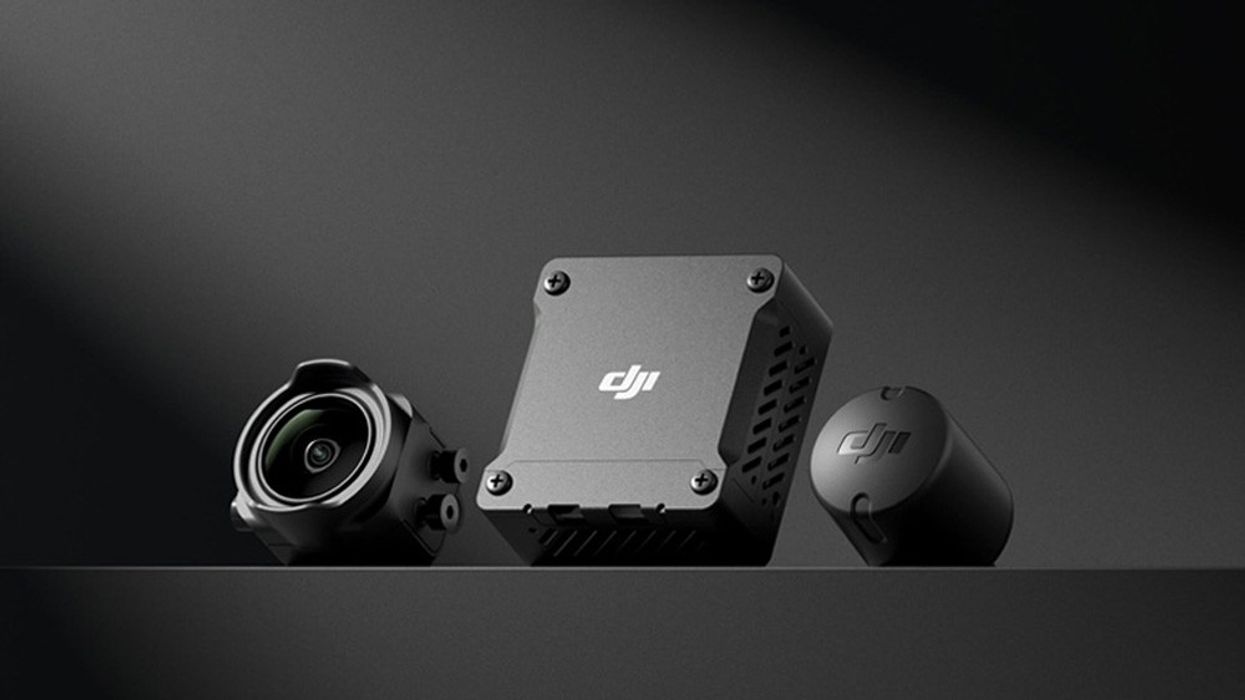DJI's O3 Air Unit Is an Aerial Camera Package for Custom-Built FPV Drones
Custom-built drone operators can now add a modular camera package to record their action in glorious 4K.

Drones are slowly taking over not only the world of content creation and cinematography. What began as a hobby of aerial acrobatics with tiny drones is now a production-ready tool for all sorts of creatives. DJI is now trying to combine those two worlds by leveraging the tech it has developed over the past decade.
Now, DJI has released a new camera platform that can be used on any FPV or cinewhoop drone. The camera sensor package, dubbed the DJI O3 Air Unit, can record 4K video and transmit an HD video signal to the drone operator from a maximum range of over six miles.

The Eye in the Sky
The O3 Air Unit consists of three modules—the sensor module, the lens module, and the transmitter array. The smart brain sensor module contains a 1/1.7 inch camera sensor which is capable of capturing 4K video at up to 60 frames per second and uses DJI’s D-Cine color science with a bitrate of 50 Mbps. It won't be enough to film the next historic epic, but it's definitely more than capable of creating great images. The camera can also capture a high frame rate of up to 120 frames per second at 2.7K.
The brain also uses DJI’s Open IMU metadata which can be used for post-image stabilization and supports Canvas mode with customizable on-screen display information of compatible DJI FPV goggles. The brain also has 20GB of onboard storage, hardwired into the system to archive footage.

Meanwhile, the video is captured through a 12.7mm camera lens module. The lens module has an aperture of f/2.8 and a super wide 155-degree field of view. The lens accepts the same ND Filter set used on the DJI Avata, which indicates that this may be the same lens used on that cinewhoop drone camera.
Lastly, the antenna array uses DJI’s O3+ transmission protocol with automatic frequency switching, which sends the full HD H.265 video signal with a latency of just 30 microseconds at a maximum range of 6.21 miles (10km).
Keep in mind, however, that various countries have regulations that require drones to stay within line of sight to the operators or observers, thereby making the distant spec impressive but not very useful. The latency, though, is impressive.
DJI also has an easy-to-follow online installation guide that users can refer to when building their FPV drone around the O3 Transmission Unit, which will help keep the weight and balance fine-tuned for flight. Moreover, DJI is also making the FPV Goggles V2 headset available as a stand-alone product so that users can take advantage of the headset to manage any drone while it is aloft.
The total weight of the DJI O3 Air Unit is just 36.4 grams, the camera module included, with a dimension of 32.5×30.5×14.5 mm, while the camera module’s dimensions are 21.2×20×19.5 mm. That's around the size of a full-frame sensor!
Where to Start Your Build
The DJI O3 Air Unit is available for a retail price of $229 and includes the camera module, lens, and transmission array with an antenna. There’s also a three-in-one cable for data transfer.
DJI O3 Air Unit

- Add FPV Capabilities to Your Drone
- For DJI Goggles 2 & FPV Goggles V2
- Works with DJI FPV Remote Controller 2
- DJI O3+ Video Transmission
- Stream 1080p H.265 Video
- Up to 6.2-Mile Range
- Frequency Auto-Switching
- 2T2R Omnidirectional Antennas
- Shoot Video up to 4K60 fps
- 20GB of Built-In Storage
The DJI FPV Goggles V2 is also available for $629 and comes with the Goggles V2, battery, eyeglass frames, screen protector, headband, power cable, dual-band antennas, and OTG cable for data transfer.
Is this piece of kit something you're interested in? Let us know in the comments!
Other details can be found on the DJI O3 AU Website.
Check out weekly specials, deals, and rebates: Pro Video Gear, Pro Audio Gear, Lighting
Source: DJI













